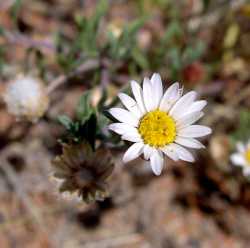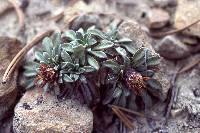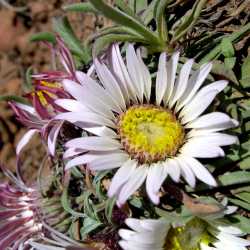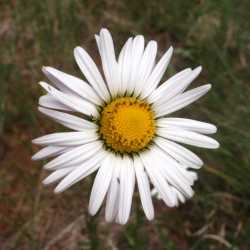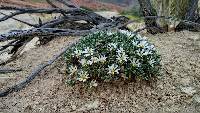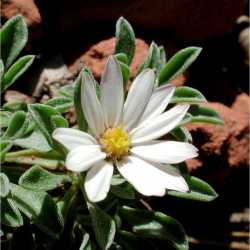Annuals, biennials, or perennials, 1-2(-3) or (1-)5-15(-75+) cm (usually taprooted or developing ± woody caudices, sometimes rhizomatous). Stems decumbent to erect, branched from bases and/or distally, glabrate, glabrous, hispidulous, pilose, piloso-hirsute, piloso-strigose, scabrellous, sericeous, strigillose, strigoso-scabrellous, strigose, or villous. Leaves basal and/or cauline; alternate; ± petiolate (petioles grading into blades); blades 1-nerved, mostly spatulate to oblanceolate, lanceolate, or linear, margins usually entire, rarely toothed or lobed, faces glabrous, glabrate, pilose, scabrellous, sericeous, strigose, strigillose, or villous, abaxial often gland-dotted. Heads radiate, borne singly (± sessile among rosette leaves, or at ends of leafy stems, or on scapiform peduncles). Involucres campanulate to hemispheric or broader, 4-25(-35+) mm diam. Phyllaries persistent, (16-)20-60(-80+) in [2-]3-7+ series, 1-nerved (± flat, not notably keeled), usually ± lanceolate or ovate, sometimes filiform, lance-linear, lance-ovate, linear, obovate, oblanceolate, or subulate, unequal (outer shorter), herbaceous, margins ± scarious (often finely erose to fimbrillate), abaxial faces usually strigose to strigillose, sometimes glabrate, glabrous, glandular-puberulent, piloso-strigose, pilose, or villous. Receptacles usually flat or convex (conic in T. formosa), smooth or pitted (hairy or glabrous), epaleate. Ray florets (4-)13-34(-67+), pistillate, fertile; corollas usually white, pink, bluish, or lavender (yellow in T. aprica). Disc florets (16-)30-100(-200+), bisexual, fertile; corollas yellow (sometimes tinged with cyan), tubes shorter than cylindro-funnelform throats, lobes 5, usually erect, sometimes spreading, lance-deltate to lance-oblong; style-branch appendages lance-deltate to attenuate. Cypselae (± stramineous) ± flattened, obovate to oblanceolate, 2(-3)-nerved, faces glabrate or hairy (hair tips entire, forked, or glochidiform); pappi persistent or readily falling, of 12-35+, ± lanceolate or subulate to setiform scales (= flattened bristles of some authors; often less well developed on ray cypselae). x = 9.
J. H. Beaman (1957) noted that apomixis (asexual production of seeds) is characteristic of some townsendias. Apomictic populations may be locally or regionally fairly uniform and differ from other apomictic populations or population systems within single taxonomic species. Consequently, the evolutionary history within Townsendia and the species concepts used in the taxonomy of Townsendia may differ from those encountered in genera that do not include apomictic plants. Hybrids between sexual plants may be perpetuated as apomicts. Taxonomic disposition of Townsendia beamanii S. L. Welsh is not clear; the type may have resulted from hybridization between T. annua and T. incana. Petioles and blades of townsendias intergrade; leaf descriptions and measurements here include petioles plus blades. Ratios of lengths to widths of phyllaries are expressed as 'l/w = 2.5-5,' etc.



